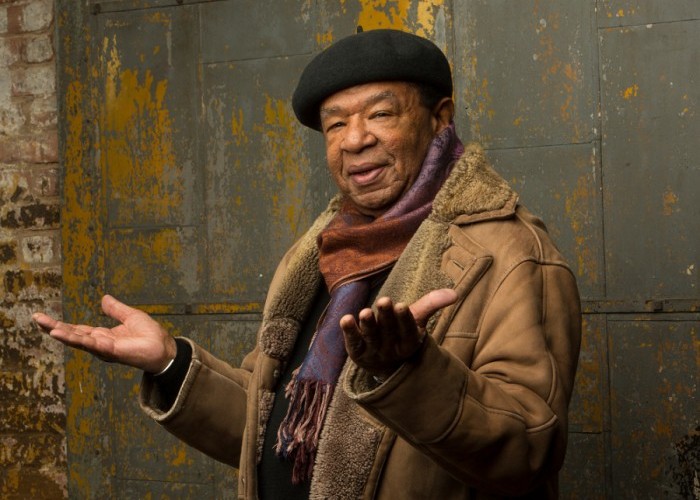Oct 28, 2025 10:47 AM
In Memoriam: Jack DeJohnette, 1942–2025
Jack DeJohnette, a bold and resourceful drummer and NEA Jazz Master who forged a unique vocabulary on the kit over his…

Buster Williams’ new album is titled Audacity.
(Photo: Jimmy Katz)On hiatus from his long-running gig with singer Nancy Wilson, bassist Buster Williams, then 25, suddenly got an offer to tour the Northwest with Miles Davis. He took the job, of course, and soon found himself swept up in the whirlwind of invention that Davis, Wayne Shorter, Herbie Hancock and Tony Williams were creating onstage in 1967.
“These guys had already created a direction of their own,” Williams recently said at the Manhattan club Smoke. “I had to step into that and grasp it very quickly.”
But when the trumpeter asked him to stay with the quintet after Williams’ five-week hiatus had ended, he declined. The decision, based on the comparative rates of pay, is one that the bassist thinks about to this day.
“If I have any regrets, that might be the only one—that I didn’t actually stay with Miles,” he said. “But I don’t have a real regret about that, either. It’s on my résumé, and I learned a lot from Miles when I was with him.”
Two years after the Davis tour, Williams joined Hancock’s groundbreaking group Mwandishi, and in 1975, he released his first album as a leader, Pinnacle.
At 76, Williams might no longer be roiling the musical landscape in quite the same way. But his writing has, if anything, grown more personal. His sound—brilliantly clear, resonant and vibrant—is as inimitable as ever on Williams’ new quartet album, Audacity (Smoke Sessions).
Williams’ originals reflect a spirit nurtured by decades of Buddhist chanting. “Ariana Anai” and “Briana,” each written for a granddaughter, glow with familial love, and the episodic “Triumph” burns with an inner intensity.
“It’s got an effect on me when I play it and think about its origins,” he said about “Triumph.” “I don’t know where it came from, but it’s expressing something that lives inside of me that exists in hope.”
Driven by that sense of hope, Audacity is the latest stop on a journey in which the next stop always is unclear. The only certainty, Williams declared, is that “the next one will be better.”
The endless refining of Williams’ art was a major takeaway for filmmaker Adam Kahan, who has been working on Bass To Infinity, a documentary about the bassist, for about two years.
“There’s no question he’ll do that till he dies,” Kahan said. “There’s no other option.”
Williams, while complimenting Kahan’s work, put it another way: “I don’t want to finish this life after necessarily completing my mission without having started something new. I’d like to be on the upswing.” DB

Jack DeJohnette boasted a musical resume that was as long as it was fearsome.
Oct 28, 2025 10:47 AM
Jack DeJohnette, a bold and resourceful drummer and NEA Jazz Master who forged a unique vocabulary on the kit over his…

D’Angelo achieved commercial and critical success experimenting with a fusion of jazz, funk, soul, R&B and hip-hop.
Oct 14, 2025 1:47 PM
D’Angelo, a Grammy-winning R&B and neo-soul singer, guitarist and pianist who exerted a profound influence on 21st…

Kandace Springs channeled Shirley Horn’s deliberate phrasing and sublime self-accompaniment during her set at this year’s Pittsburgh International Jazz Festival.
Sep 30, 2025 12:28 PM
Janis Burley, the Pittsburgh International Jazz Festival’s founder and artistic director, did not, as might be…

Jim McNeely’s singular body of work had a profound and lasting influence on many of today’s top jazz composers in the U.S. and in Europe.
Oct 7, 2025 3:40 PM
Pianist Jim McNeely, one of the most distinguished large ensemble jazz composers of his generation, died Sept. 26 at…

Drummond was cherished by generations of mainstream jazz listeners and bandleaders for his authoritative tonal presence, a defining quality of his style most apparent when he played his instrument unamplified.
Nov 4, 2025 11:39 AM
Ray Drummond, a first-call bassist who appeared on hundreds of albums as a sideman for some of the top names in jazz…